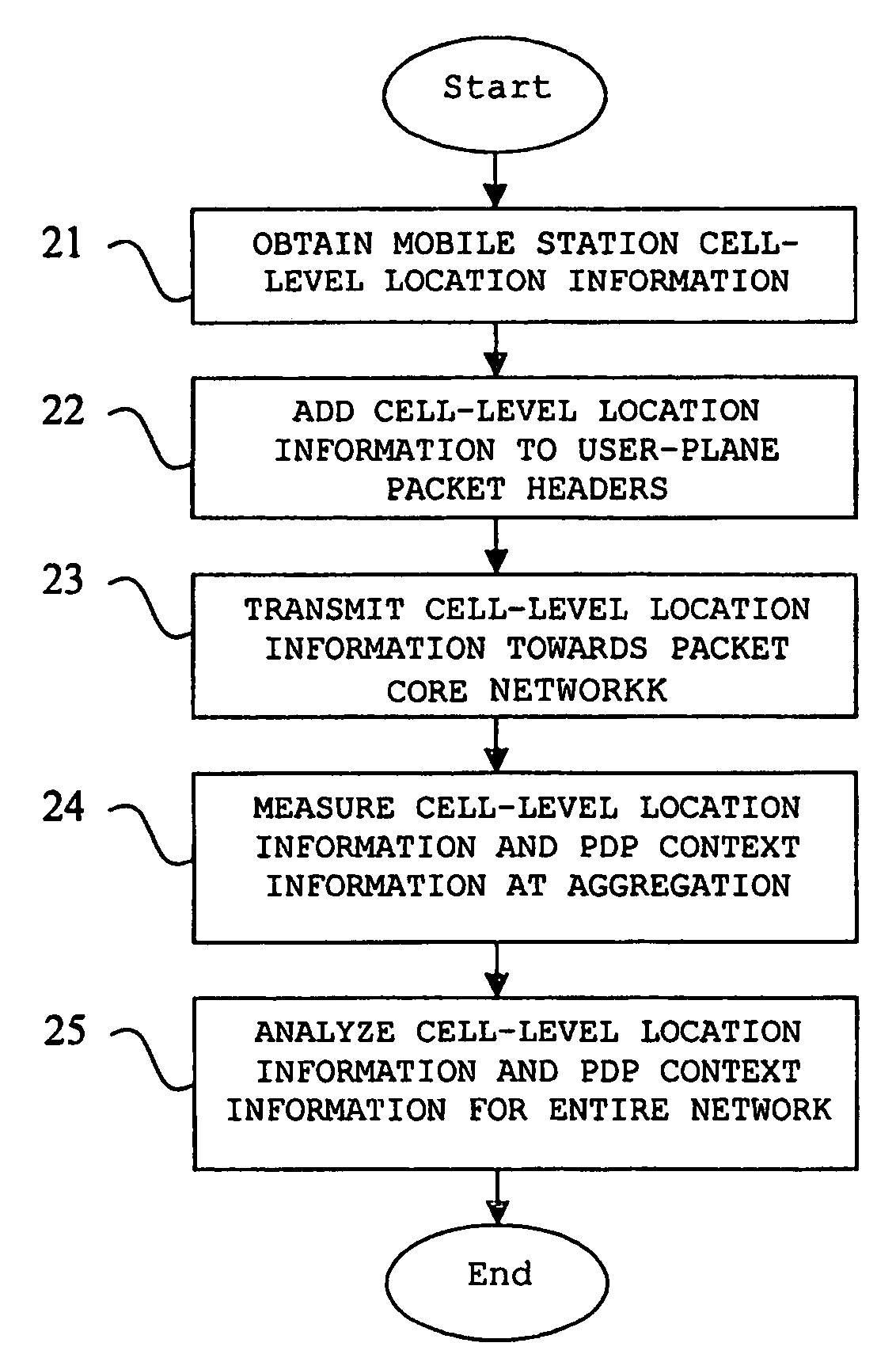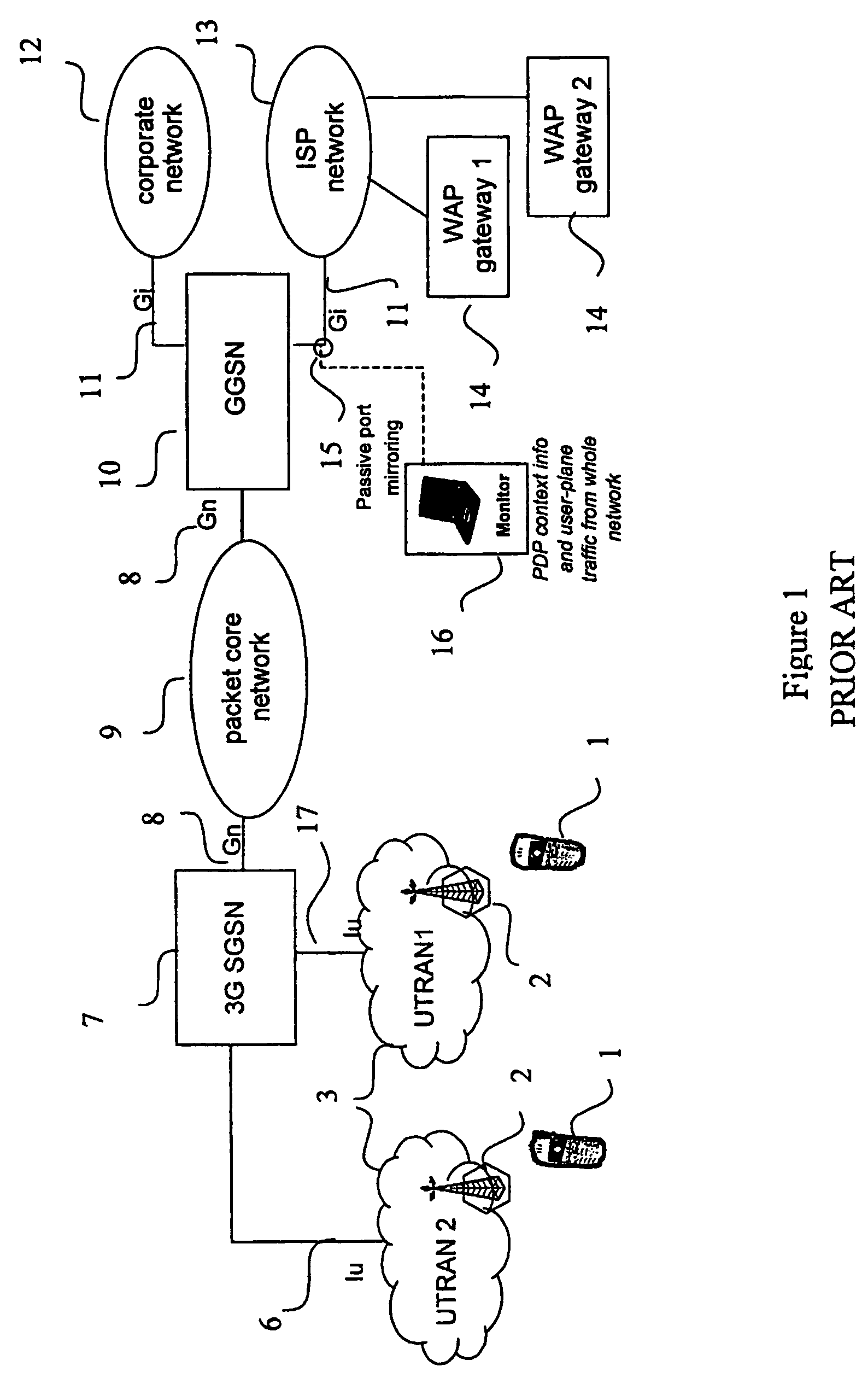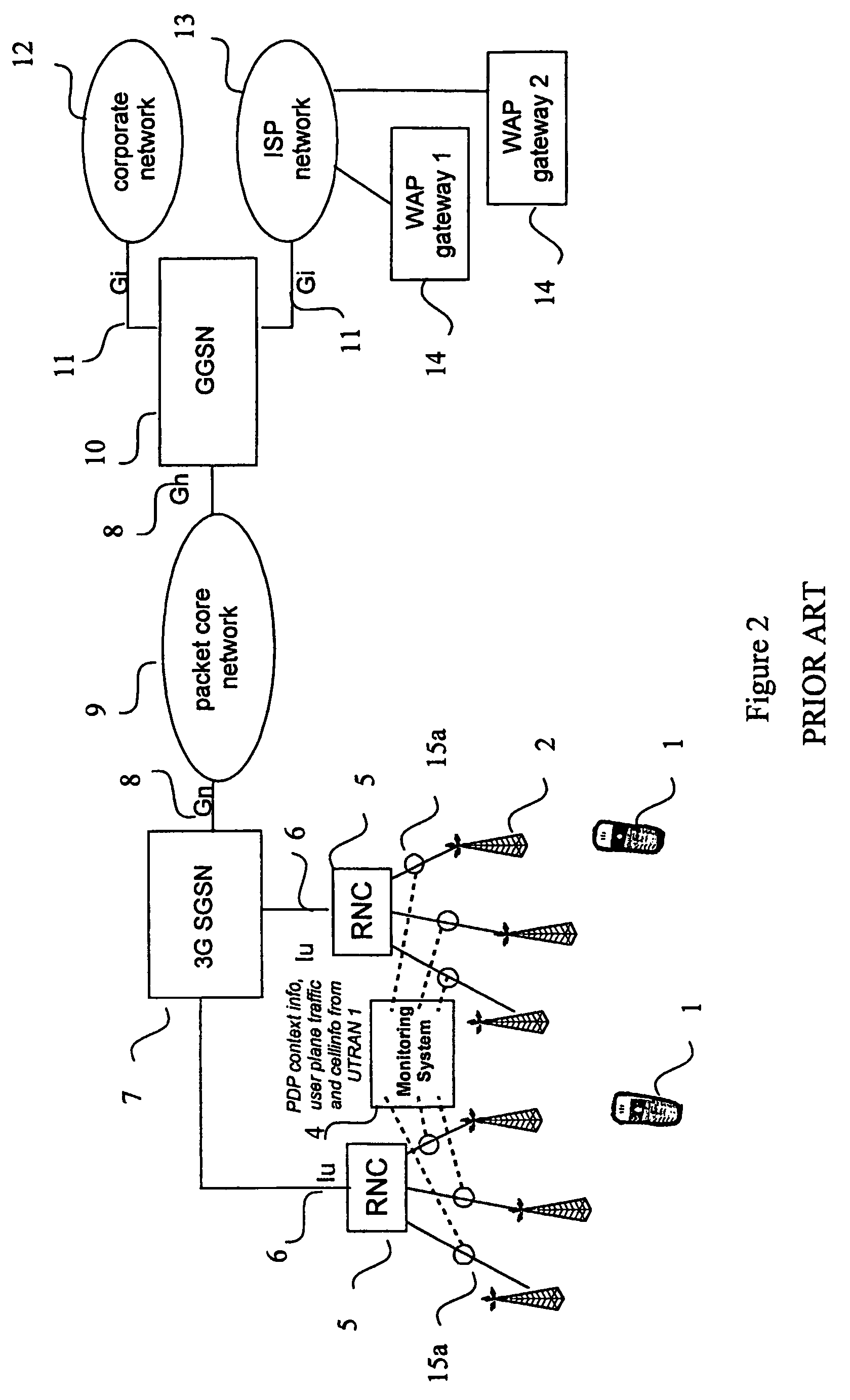Location signaling for large-scale, end-to-end, quality-of-service monitoring of mobile telecommunication networks
a technology of quality-of-service monitoring and location signaling, which is applied in the field of mobile telecommunication networks, can solve the problems of difficult model and analysis, complicated queuing phenomena, and disadvantages of both solutions, and achieve the effect of cost-effective collection and further reducing the number of needed measurement points
- Summary
- Abstract
- Description
- Claims
- Application Information
AI Technical Summary
Benefits of technology
Problems solved by technology
Method used
Image
Examples
Embodiment Construction
[0034]In FIG. 1, an exemplary telecommunication network is shown according to the location unaware prior art solution, where mobile stations 1 communicate with base stations 2 through radio channels. The base stations are grouped to Radio Network Controllers 5, which are connected to a 3G SGSN 7 through Iu interfaces 6. The 3G SGSN is linked to a packet core network 9 and to a GGSN 10 through Gn interfaces 8. The GGSN is linked to a corporate network 12 and to an ISP network 13 through Gi interfaces 11. Additionally, two Wireless Application Protocol (WAP) Gateways 14 are connected to the ISP network. Measurement point 15 is attached to a link between the GGSN 10 and the ISP network 13, thereby accessing session information from the network.
[0035]The session management information in both GPRS and UMTS is communicated between the mobile stations and the core network (i.e., the network containing the SGSNs and GGSNs), and the relevant information (i.e., the PDP context) is available ...
PUM
 Login to View More
Login to View More Abstract
Description
Claims
Application Information
 Login to View More
Login to View More - R&D
- Intellectual Property
- Life Sciences
- Materials
- Tech Scout
- Unparalleled Data Quality
- Higher Quality Content
- 60% Fewer Hallucinations
Browse by: Latest US Patents, China's latest patents, Technical Efficacy Thesaurus, Application Domain, Technology Topic, Popular Technical Reports.
© 2025 PatSnap. All rights reserved.Legal|Privacy policy|Modern Slavery Act Transparency Statement|Sitemap|About US| Contact US: help@patsnap.com



